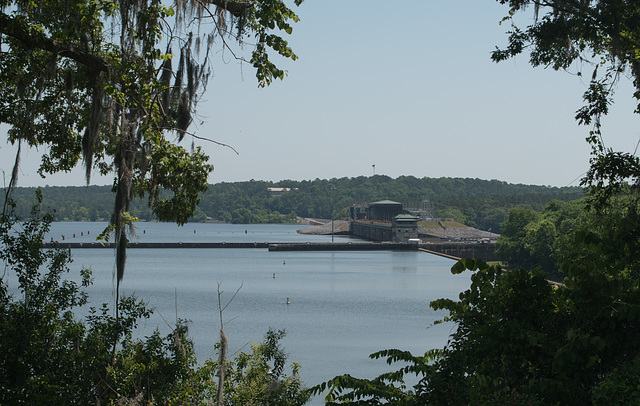machland wall
London Thames Barrier (#0213)
London Teddington Locks (#0412)
Prague Smíchov Lock (#0824)
Curecanti Nat Rec Morrow Point Dam (# 0209)
Curecanti Nat Rec Blue Mesa Dam (# 0239)
Enguri dam
McNary Dam WA (#0409)
McNary Dam WA (#0406)
John Day dam avian predation (#0347)
Willamette Falls Dam, Oregon City (#1504)
Willamette Falls Dam, Oregon City (#1505)
Cardiff bay 3 elipses for 3 locks
Imperial Dam, Hidden Shores, AZ (# 0818)
Imperial Dam, Hidden Shores, AZ (# 0807)
Laguna Dam - built in 1905 (#0806)
Yuma Quartermaster Depot - Siphon exhibit (#0910)
Yuma Quartermaster Depot - Siphon exhibit (#0903)
Hetch Hetchy O'Shaugnessy Dam (#0640)
Hetch Hetchy O'Shaugnessy Dam (#0634)
Hetch Hetchy O'Shaugnessy Dam (#0629)
CA 88 Caples Lake dam (#0512)
Lake Owyhee, OR 0753a
Flaming Gorge Dam UT (#0048)
Flaming Gorge Dam UT (#0043)
Great Falls MT Rainbow Falls and Dam (#0416)
Location
See also...
Keywords
Authorizations, license
-
Visible by: Everyone -
Attribution + non Commercial + no derivative
-
266 visits
Chattahoochee Jim Woodruff Dam and Lock (#0600)


The Jim Woodruff Dam which impounds the waters of the Chattahoochee and Flint rivers, releasing them into the Apalachicola River at Chattahoochee, Fl. The dam, operated by the Army Corps of Engineers, was completed in 1952; it was built for flood control and hydroelectric generation. It contains one lock to accommodate barge and recreational boat traffic that moves from the Chattahoochee river, down the Apalachicola river, to the Gulf. The dam creates Lake Seminole, which is mainly in Georgia, and the east end of the dam (the center of this picture) is in Georgia.
I recall there being quite a bit of controversy about this dam’s construction that was still debated when I was driving through this area regularly back in the early 70’s. Unfortunately, an Internet search on that controversy did not generate very much information, but suggested multiple issues. What follows is an effort to try to summarize those issues; not being an expert on that system, some of this may be not quite right.
One key issue for the Apalachicola-Chattahoochee-Flint system is that Atlanta is at the headwaters of the Chattahoochee and, as a rapidly growing metropolitan area, it reduces the flow by siphoning off a large volume of water for its citizens. Secondly, there’s a long history of cities along the river (including the metropolitan areas of Atlanta and Columbus, GA) dumping both sewage and toxic waste directly into the river. Both of these two factors influence the health of Apalachicola Bay in Florida.
A third factor is the barge canal. The Chattahoochee and Apalachicola rivers were an important shipping system before and immediately after the Civil War due to extensive water, and then hydroelectric, powered industrial (especially textile) development in the Columbus, GA. area. Though the gains in railroad access around the turn of the 20th century resulted in waterborne shipping on the rivers becoming much less frequent, dams later built on the river were designed for barge traffic. Apparently there continues to be some barge traffic, but it is argued that it is not enough to justify the environmental damage caused by continued dredging to maintain the canal.
Sources:
en.wikipedia.org/wiki/Lake_Seminole
www.janandpat.net/dams/acoe/woodruff.htm
tfaoi.com/aa/6aa/6aa369.htm
en.wikipedia.org/wiki/Chattahoochee_River
(Part of a photo-essay series on personal history and race, with keyword FlaAla0518)
I recall there being quite a bit of controversy about this dam’s construction that was still debated when I was driving through this area regularly back in the early 70’s. Unfortunately, an Internet search on that controversy did not generate very much information, but suggested multiple issues. What follows is an effort to try to summarize those issues; not being an expert on that system, some of this may be not quite right.
One key issue for the Apalachicola-Chattahoochee-Flint system is that Atlanta is at the headwaters of the Chattahoochee and, as a rapidly growing metropolitan area, it reduces the flow by siphoning off a large volume of water for its citizens. Secondly, there’s a long history of cities along the river (including the metropolitan areas of Atlanta and Columbus, GA) dumping both sewage and toxic waste directly into the river. Both of these two factors influence the health of Apalachicola Bay in Florida.
A third factor is the barge canal. The Chattahoochee and Apalachicola rivers were an important shipping system before and immediately after the Civil War due to extensive water, and then hydroelectric, powered industrial (especially textile) development in the Columbus, GA. area. Though the gains in railroad access around the turn of the 20th century resulted in waterborne shipping on the rivers becoming much less frequent, dams later built on the river were designed for barge traffic. Apparently there continues to be some barge traffic, but it is argued that it is not enough to justify the environmental damage caused by continued dredging to maintain the canal.
Sources:
en.wikipedia.org/wiki/Lake_Seminole
www.janandpat.net/dams/acoe/woodruff.htm
tfaoi.com/aa/6aa/6aa369.htm
en.wikipedia.org/wiki/Chattahoochee_River
(Part of a photo-essay series on personal history and race, with keyword FlaAla0518)
- Keyboard shortcuts:
Jump to top
RSS feed- Latest comments - Subscribe to the comment feeds of this photo
- ipernity © 2007-2024
- Help & Contact
|
Club news
|
About ipernity
|
History |
ipernity Club & Prices |
Guide of good conduct
Donate | Group guidelines | Privacy policy | Terms of use | Statutes | In memoria -
Facebook
Twitter

Sign-in to write a comment.